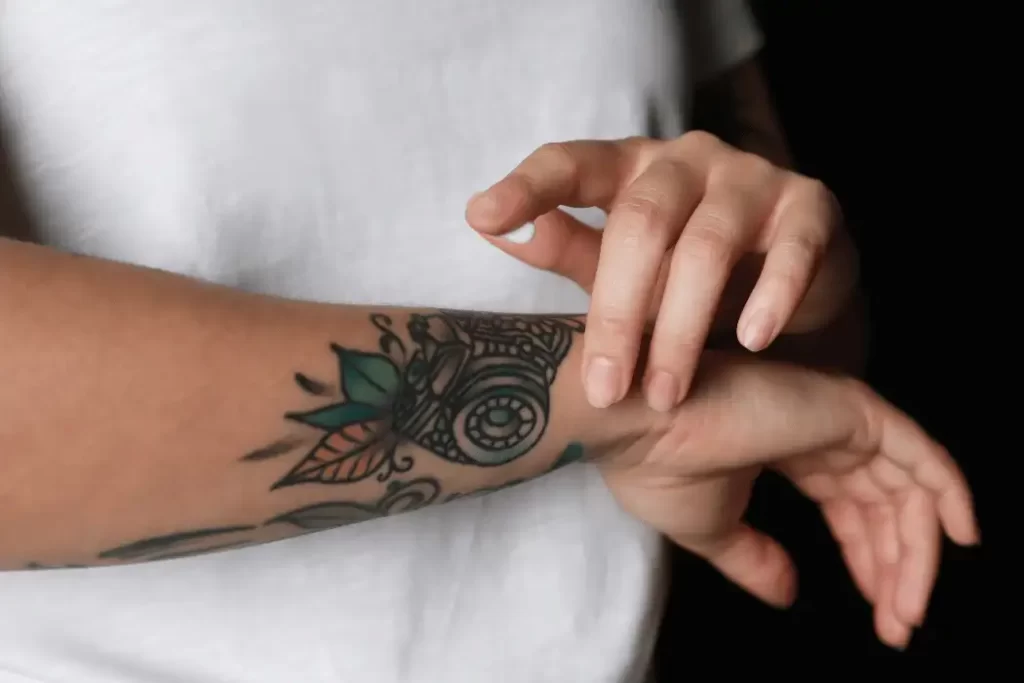Tattoos have become a widely embraced form of self-expression, allowing individuals to adorn their bodies with meaningful art. However, the process of getting a tattoo involves more than just the inking itself. Tattoo scabbing, a natural part of the healing process, can sometimes cause concern for those new to the world of tattoos. In this comprehensive guide, we will delve into the intricacies of tattoo scabbing, offering insights and tips for a smooth healing journey.
This comprehensive guide on tattoo scabbing provides a vital source of knowledge to help you understand the healing process of tattoos and the formation of scabs.
Understanding Tattoo Scabbing
Tattoo scabbing is a natural part of the healing process that occurs after getting a tattoo. As your skin heals from the trauma of the tattoo needle, scabs may form over the inked area. These scabs are comprised of dried blood, plasma, and other fluids. While it might be tempting to pick at these scabs, it’s crucial to resist the urge, as doing so can negatively impact the appearance of your tattoo.

The Healing Stages of a Tattoo
The healing process of a tattoo generally occurs in several stages:
1. Inflammation:
Right after getting a tattoo, the body responds with inflammation. This is when your tattooed skin may appear red, swollen, and slightly sore.
2. Scabbing and Flaking:
As the tattooed area begins to heal, scabs may form. It’s important to let these scabs fall off naturally, as premature removal can lead to ink loss.
3. Peeling:
Following scabbing, your tattooed skin might start to peel. This is a sign that the healing is progressing, and fresh skin is emerging.
4. Settling In:
After peeling, your tattoo will begin to settle into your skin, and its final colors will start to emerge.
Why Does Tattoo Scabbing Occur?
Tattoo scabbing occurs because your body’s natural response to any wound or injury includes forming a protective scab. This scab shields the open wound, allowing new skin to form underneath. In the case of tattoos, this process covers the inked area, protecting it from potential infections.
Dos and Don’ts During the Scabbing Phase
During the scabbing phase, it’s important to follow certain guidelines:
- Do: Keep the tattooed area clean by gently washing it with mild soap and water.
- Do: Apply a thin layer of fragrance-free, hypoallergenic moisturizer to keep the skin hydrated.
- Don’t: Pick, scratch, or peel the scabs, as this can lead to ink loss and scarring.
- Don’t: Expose your healing tattoo to direct sunlight, as UV rays can fade the ink and damage the delicate skin.
Caring for Your Healing Tattoo
To ensure a successful healing process, take these steps:
- Follow the Aftercare Instructions: Your tattoo artist will provide you with specific aftercare instructions. Make sure to adhere to them closely.
- Stay Hydrated: Drink plenty of water, as well-hydrated skin heals more effectively.
- Avoid Tight Clothing: Opt for loose-fitting clothing to prevent friction and irritation on the tattooed area.
Preventing Complications
While tattoo scabbing is a normal part of the healing process, there are steps you can take to prevent complications:
- Keep an Eye on Infection Signs: If your tattoo becomes overly painful, swollen, or oozes pus, it might be infected. Seek medical attention promptly.
- Allergic Reactions: If you notice excessive itching, redness, or hives around the tattoo, you might be experiencing an allergic reaction. Consult a doctor.
Keeping Your Skin Moisturized
Moisturizing your healing tattoo is essential. Applying a thin layer of unscented, alcohol-free lotion helps prevent excessive dryness and itching.
Avoiding Picking and Scratching
Resist the urge to scratch or pick at scabs. Doing so can lead to scarring and may cause the ink to fade unevenly.
When to Seek Professional Help
If you’re concerned about your healing process, don’t hesitate to contact your tattoo artist or a medical professional. They can provide guidance and ensure proper healing.
Maintaining Vibrant Colors After Healing
Once your tattoo has fully healed, you can keep its colors vibrant by:
- Using Sunscreen: Apply sunscreen to your tattoo whenever it’s exposed to the sun to prevent fading.
- Staying Hydrated: Moisturized skin retains ink better, so continue to keep your skin hydrated.
Long-Term Care for Your Tattoo
Proper aftercare extends beyond the initial healing phase:
- Hydrate and Moisturize: Continue to drink water and moisturize your tattooed skin to maintain its appearance.
- Protect from the Sun: UV rays can fade tattoos over time, so protect your ink with sunscreen or clothing.
Myths About Tattoo Scabbing
Several myths surround tattoo scabbing. One common misconception is that picking at scabs speeds up healing. In reality, this can lead to complications and affect the final outcome of your tattoo.
Tattoo Scabbing: A Sign of Infection?
While scabbing is normal, excessive or prolonged scabbing, along with symptoms like pain and inflammation, might indicate infection. Consulting a medical professional is crucial in such cases.
Embracing the Healing Process
Tattoo scabbing, although sometimes worrisome, is a natural part of the healing journey. Embrace the process, follow proper aftercare, and watch as your tattoo evolves into a stunning work of art.
Conclusion
In conclusion, understanding the process of tattoo scabbing is essential for anyone with a new tattoo. By following proper aftercare instructions, resisting the urge to pick at scabs, and staying vigilant for signs of infection, you can ensure a successful healing journey for your treasured artwork.


